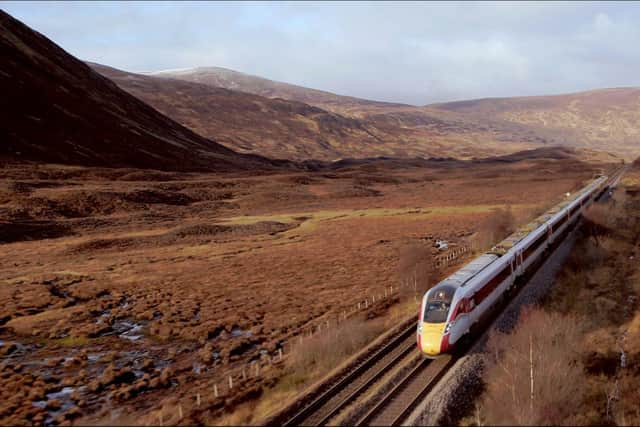Nitrogen dioxide pollution levels higher in some diesel trains than on busy streets
and live on Freeview channel 276
One of the first such studies of its type found these included a train similar to those operated by LNER between Edinburgh, Aberdeen and Inverness.
The concentrations of NO2, one of the main causes of poor health from air pollution, peaked in tunnels and at stations – but remained within legal limits.
Advertisement
Hide AdAdvertisement
Hide AdThe RSSB said there had been growing concern that emissions might be entering carriages, exposing passengers and staff to harmful pollutants.


The UK Government has now launched a review and said standards might be raised.
UK rail minister Chris Heaton-Harris said the findings were “poorer than desired”.
He said: “The safety of staff and passengers is our absolute priority.
Advertisement
Hide AdAdvertisement
Hide Ad"While these findings are within limits, I do not believe people should have to accept anything less than the highest levels of air quality.
“I have asked the industry to immediately conduct further research and explore all engineering modifications and options to rapidly improve air quality on trains and in stations.
“I have also launched a comprehensive review of the current standards and guidance related to air quality on the rail network.
"If required, we will not hesitate to strengthen legislation to ensure the highest standards of air quality are met and maintained.”
Advertisement
Hide AdAdvertisement
Hide AdThe tests were carried out on six types of train on routes in England, including London to the Midlands, and in East Anglia.
They included a Great Western Railway class 800 train between London and Bristol, which is similar to LNER’s Azuma trains.
A class 43 diesel “High Speed Train” similar to ScotRail’s Inter7City fleet was also tested between London and Nottingham.
The report found concentrations of nitrogen dioxide on trains can reach up to 13 times higher than those detected beside major central London roads.
Advertisement
Hide AdAdvertisement
Hide AdIt stated: “The highest levels of nitrogen dioxide were found between Paddington and Bristol Temple Meads on board a class 800 bi-mode train when in diesel mode.
"These levels were also significantly higher than typical levels routinely measured at busy urban roadside locations.”
The RSSB said that among locomotive-hauled trains, such as class 43s, the lowest pollution levels were found at the front of the train and the highest at the back.
It said: “The exhaust appears to either miss the front carriages due to buoyancy or take time to be drawn into the train through windows, doors and the air conditioning system.”
Advertisement
Hide AdAdvertisement
Hide AdThe body also found that newer trains did not necessarily have better on-board air quality than older ones.
It said air quality on diesel trains was close to that when travelling by bus, bicycle or car, but electric and bi-mode trains were cleaner.
However, further research will be undertaken on eight other types of trains, including those similar to two of ScotRail’s diesel fleets – class 156 and 158 – and CrossCountry’s cross-Border Voyager diesel trains.
All ScotRail trains are diesel powered on routes north of Dunblane and south of Ayr, and they also operate on several lines within the Central Belt.
Advertisement
Hide AdAdvertisement
Hide AdA ScotRail spokesperson said engine idling was minimised in stations and air quality at “key stations” met occupational health standards.
A spokesperson for Hitachi Rail, which built the class 800 and Azuma trains said: “All our trains meet industry standards, including UK environmental and public health laws.”
A message from the Editor:
Thank you for reading this article. We're more reliant on your support than ever as the shift in consumer habits brought about by coronavirus impacts our advertisers.
If you haven't already, please consider supporting our trusted, fact-checked journalism by taking out a digital subscription.
Comment Guidelines
National World encourages reader discussion on our stories. User feedback, insights and back-and-forth exchanges add a rich layer of context to reporting. Please review our Community Guidelines before commenting.
